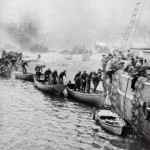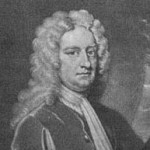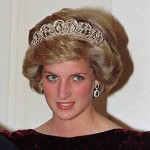french
 Not many disastrous wartime defeats could be declared a miraculous success, but in May of 1940, with the Germans advancing quickly toward Dunkirk the French, British, and Canadian troops were trapped between the German forces, and the English Channel. This situation was far more that a disastrous defeat, it was about to get catastrophic, because there appeared to be no way to get the Allied troops out of the way of the German forces, and the Allies were looking at the loss of thousands of soldiers, if something wasn’t done…and done quickly!!
Not many disastrous wartime defeats could be declared a miraculous success, but in May of 1940, with the Germans advancing quickly toward Dunkirk the French, British, and Canadian troops were trapped between the German forces, and the English Channel. This situation was far more that a disastrous defeat, it was about to get catastrophic, because there appeared to be no way to get the Allied troops out of the way of the German forces, and the Allies were looking at the loss of thousands of soldiers, if something wasn’t done…and done quickly!!
It was at this point that my 15th cousin 0nce removed, Winston Spencer-Churchill showed the world what a great master strategist he really was. He had warned the Allies that “the whole root, the core, and brain of the British Army” was stranded and likely to die in Dunkirk, if they didn’t come up with a way to evacuate them. A plan was devised, and given the code name, Operation Dynamo. This plan was really a God-given way of escape, where their seemed to be no way. In fact, Churchill  called it “a miracle of deliverance.” And so it was.
called it “a miracle of deliverance.” And so it was.
The plan used every available “ship”…right down to the smallest lifeboat. These vessels…thousands of them, many of which were manned by civilian volunteers, and each of them knew the danger they were putting themselves and their vessels in, but they bravely made the decision to participate anyway. On this day, May 26, 1940, at 19:00 hours, Vice Admiral Ramsey was given the orders and Operation Dynamo commenced. The order was given to proceed, amid information that Boulogne and Calais had been captured. This meant that the only port available was Dunkirk. Ramsey estimated that only 45,000 troops could be rescued. Lord John Galt had ordered the troops to retreat to the sea. As the Belgian army was defeated, King Leopold asked the Germans for an armistice. This dragged out the negotiations, and bought the Allies 24 hours to get their troops out.
The rescue was slow and, in fact took days. The weather prevented the Luftwaffe from attacking for a time, but that didn’t last long. Within a matter of days the weather cleatred and the Germans set out to try to stop the  rescue that they had not realized was of the magnitude it was. From their attack, several ships wer sunk, but that still didn’t stop the seccess of the operation. By the time the last boat left Dunkirk harbor, about 338,226 soldiers (198,229 British and 139,997 French) were evacuated by a fleet of 860 boats.
rescue that they had not realized was of the magnitude it was. From their attack, several ships wer sunk, but that still didn’t stop the seccess of the operation. By the time the last boat left Dunkirk harbor, about 338,226 soldiers (198,229 British and 139,997 French) were evacuated by a fleet of 860 boats.
The evacuation was dubbed Operation Dynamo, because during World War One, Dover Castle was powered with electricity by a dynamo located beneath the castle. The castle was used as naval headquarters during World War Two, and the dynamo room is where British Vice-Admiral Bertram Ramsay planned the Dunkirk rescue mission. It is also the place where Ramsay briefed Churchill while rescue efforts were underway.
 In researching my family history, I have seen many names change as people misspell them, Americanize them, or they change because part of the name is no longer important or does not exactly apply. The Spencer name has taken many twists and turns, going from being an occupational name, when it was Despencer, to a French sounding version when it was Le deSpencer, to the name we all now recognize following the marriage of Lady Diana Spencer to Prince Charles in London on July 29, 1981. One of the most interesting things I found with the Spencer name is when it was hyphenated, and for some reason, many people did not realize that it was a hyphenated name. Many people think that Winston Spencer Churchill’s last name was Churchill, but that is really not the case. His name really was Winston Leonard Spencer-Churchill.
In researching my family history, I have seen many names change as people misspell them, Americanize them, or they change because part of the name is no longer important or does not exactly apply. The Spencer name has taken many twists and turns, going from being an occupational name, when it was Despencer, to a French sounding version when it was Le deSpencer, to the name we all now recognize following the marriage of Lady Diana Spencer to Prince Charles in London on July 29, 1981. One of the most interesting things I found with the Spencer name is when it was hyphenated, and for some reason, many people did not realize that it was a hyphenated name. Many people think that Winston Spencer Churchill’s last name was Churchill, but that is really not the case. His name really was Winston Leonard Spencer-Churchill.
In 1700, following the 1698 death of his first wife, Arabella Cavendish, Charles Spencer, 3rd Earl of Sunderland married his second wife, Anne Churchill, who was the daughter of John Churchill, 1st Duke of Marlborough and Sarah Churchill,  Duchess of Marlborough. This was an important alliance for Sunderland and for his descendants. Through it, he was introduced to political life and later the dukedom of Marlborough came to the Spencers. It would seem that this alliance was important enough to keep the Churchill name in the marriage, because their children also carried the name originally.
Duchess of Marlborough. This was an important alliance for Sunderland and for his descendants. Through it, he was introduced to political life and later the dukedom of Marlborough came to the Spencers. It would seem that this alliance was important enough to keep the Churchill name in the marriage, because their children also carried the name originally.
The Spencer family divided into two branches at this point. The older children kept the Spencer-Churchill, and later Churchill name in many cases, and the younger children continued on with the Spencer name. From the Spencer-Churchill branch, came Winston Leonard Spencer-Churchill, who went by Winston Churchill as often as he went by Winston Spencer Churchill. I have not really found any evidence that he personally went by Winston Spencer-Churchill, although there are some  documents about him that correctly list his name that way.
documents about him that correctly list his name that way.
Princess Diana’s line came from the youngest son of Charles Spencer, 3rd Earl of Sunderland, whose name was John Spencer. This branch of the family took the correct name, which was Spencer, without the hyphenated addition of the Churchill name, no matter how important the alliance of the two families was at the time of their joining. In researching the lines of a family, the thing that makes it the most difficult is the altering of the original names, because it makes it difficult to be sure we are following the lines correctly

